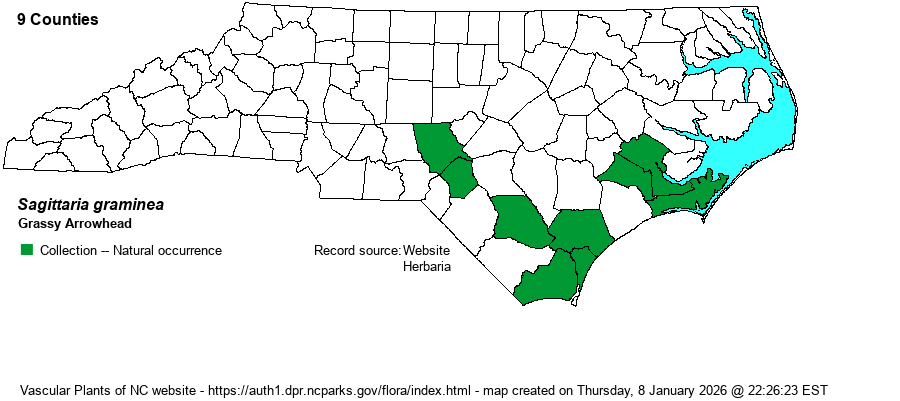| taxonName | relationship | relatedTaxonName | relatedTaxonRefText | relComments |
|---|
|
| Sagittaria graminea | = | Sagittaria graminea var. graminea | Gleason and Cronquist (1991) | |
| Sagittaria graminea | = | Sagittaria graminea var. graminea | Gleason (1952) | |
| Sagittaria graminea | = | Sagittaria graminea var. graminea | Godfrey and Wooten (1979, 1981) | |
| Sagittaria graminea | = | Sagittaria graminea var. graminea | Kartesz (1999) | |
| Sagittaria graminea | = | Sagittaria graminea var. graminea | | |
| Sagittaria graminea | = | Sagittaria graminea var. graminea | Radford, Ahles, and Bell (1968) | |
| Sagittaria graminea | = | Sagittaria graminea var. graminea | Wunderlin & Hansen Flora of Florida (3) | |
| Sagittaria graminea | = | Sagittaria graminea var. graminea | Haynes, Les, & Holm-Nielsen in Kubitzki (1998b). | |
| Sagittaria graminea | > | Sagittaria graminea | Fernald (1950) | |
| Sagittaria graminea | > | Sagittaria eatonii | Fernald (1950) | |
| Sagittaria graminea | = | Sagittaria graminea ssp. graminea | Flora of North America (1993b, 1997, 2000, 2002a, 2002b, 2003a, 2004b, 2005, 2006a, 2006b, 2006c, 2007a, 2009, 2010) | |
| Sagittaria graminea | > | Sagittaria graminea | Small (1933, 1938) | |
| Sagittaria graminea | > | Sagittaria cycloptera | Small (1933, 1938) | |
| Sagittaria graminea | < | Sagittaria graminea | Wofford (1989) | |
| Sagittaria graminea | < | Sagittaria graminea var. graminea | Haynes, Les, & Holm-Nielsen in Kubitzki (1998b). | (also see S. isoetiformis) |
|
| Source: Weakley's Flora |

